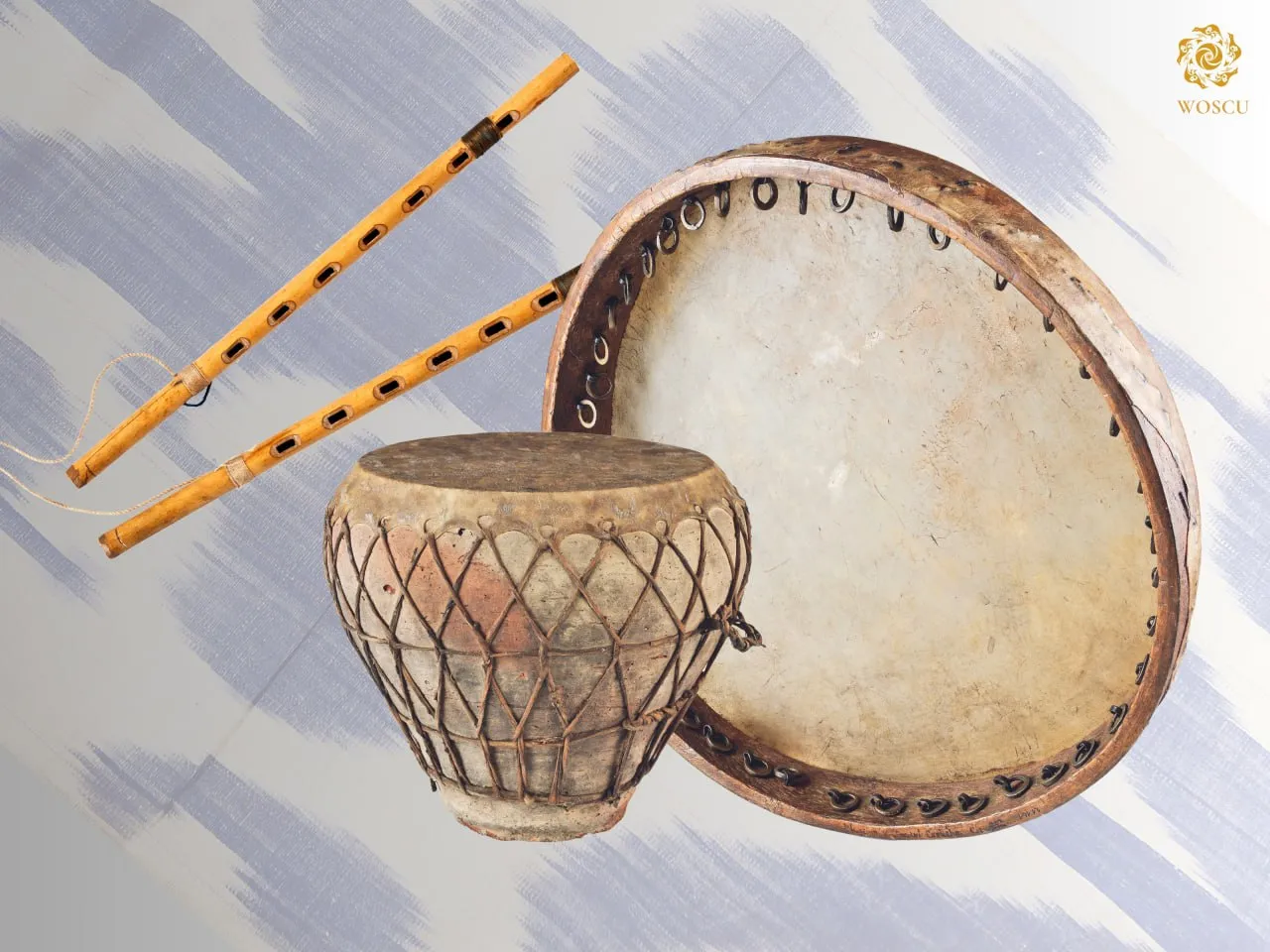
In the late 19th – early 20th centuries, there were two types of musical ensembles in cities. The first consisted only of wind and percussion instruments, the second – mainly of strings, which played to the accompaniment of tambourine (doira) and several wind instruments. They were performed on different platforms. The musical ensemble of wind and percussion instruments used to perform in the open air in royal courts and participate in national celebrations and military ceremonies. The second type of ensemble was more oriented to performing indoors and had a corresponding concert repertoire. Music performed on wind and percussive instruments also accompanied theatrical puppet shows and the performances of maskharabozs and acrobats. Musicians made up corporations, which, like artisans’ guilds, had their own lifestyle rules.
Musical instruments were made most often of mulberry, apricot and walnut. Brass, copper and bronze were also used. Silk threads, horsehair, as well as dried sheep or goat intestines were used for strings. There was a special focus on the decoration of instruments: they were decorated with carvings and intarsia.
One of the traditional musical instruments of Uzbekistan was dutar – a two-stringed plucked instrument that was used primarily to accompany a singer. A three-stringed tanbur was also widely used and was the main instrument of professional musicians.
Wind instruments included a small koshnay flute made of reed. It consisted of two equally long tubes, connected with a cord. Each tube had seven holes. Koshnay was used as a solo and orchestral instrument.
Percussive instruments included doira and nagora. The doira tambourine was an accompanying instrument for singing. It was usually used in puppet shows and dance performances, both at a royal court and in ordinary households. Nagora could consist of a pair of drums of different sizes. The larger drum made a strong sound, the smaller one – a high sound. A pair of such drums was part of a musical ensemble. A large-sized nagora with a characteristic strong sound was a signal drum announcing the departure or arrival of a khan or an emir.
The small collection of musical instruments at the Náprstek Museum is represented by membranophones, chordophones and airphones from Tashkent. There are nagoras and doiras, acquired in 1892, as well as a tanbur, dutar and koshnay, dating back to the second half of the 20th century.
You can learn more about the topic in the book-album "The Collection of the Czech Republic" (Volume XVI) in the series "Cultural Legacy of Uzbekistan in the World Collections".
The main sponsor of the project is the oilfield services company Eriell-Group.
